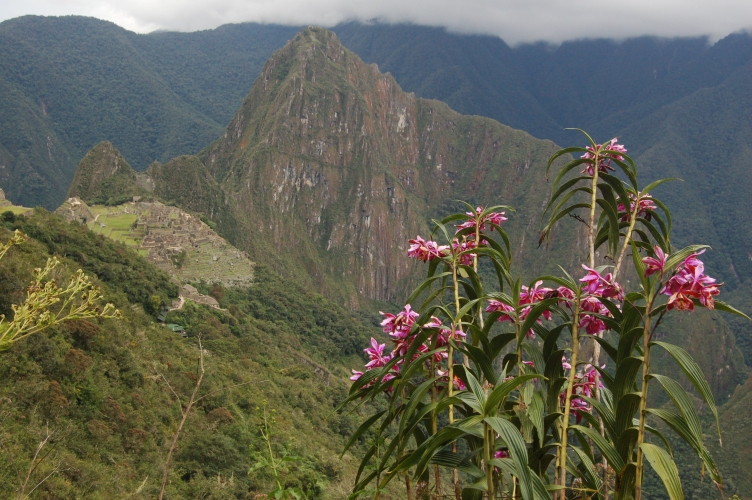Two things are immediately apparent when you visit Machu Picchu. First, you are in the jungle. Second, the Incas were masters of molding mountains.
When we boarded the train 2 hours from Machu Picchu, the terrain was dry and rocky. Very quickly trees and vines took over the landscape offering occasional glimpses of Inca ruins. On arrival, everything is lush, but you are in the horrible tourist trap of Aguas Calientes, still a grueling 1 hour climb or bus-ride away from the citadel 1,500 feet up. Climbing up through the clouds, the orchids are blooming, the birds are chirping, and the insects are biting. By the time you get your first glimpse of Machu Picchu, you have a new appreciation of the epic efforts necessary to build this city.
The trademark of Incan architecture is their precisely carved stones, creating temples and walls that fit together seamlessly like puzzle pieces. Machu Picchu contains many of these. In addition, Machu Picchu shows off the Incan mastery over irrigation with a street of 16 still-functioning fountains. But what makes the city so impressive is its integration with the mountain. Natural out-croppings are carved into stairways and altars, the best example being the temple of the condor where 2 giant out-croppings form the wings of this bird deity.
In the early morning, Machu Picchu is coated in fog, hiding views of the surrounding mountains and the river below. It’s easy to see how it was lost for hundreds of years. A few hours later, when the sun burns through the mist, a complete view of the city emerges surrounded by lush forest and a dramatic mountain backdrop. Scores of magenta orchids dance in the sun as they dangle off the surrounding cliffside and fields of grass shine on the many terraces.
Machu Picchu is by far the most famous Inca settlement, but it gains this fame largely because of its magnificent location and its isolation from the Spanish conquerors. However, we were just as impressed by the Inca ruins of Ollantaytambo, Pisac, and Tipon, and all are worthy destinations. Unfortunately, these sites, including Machu Picchu, are all left lacking in artistic appeal. All the excellent ceramics and textiles have been looted or removed to museums, leaving empty stone rooms with wild flowers attempting to stand in for the previous splendor.


Leave a Reply